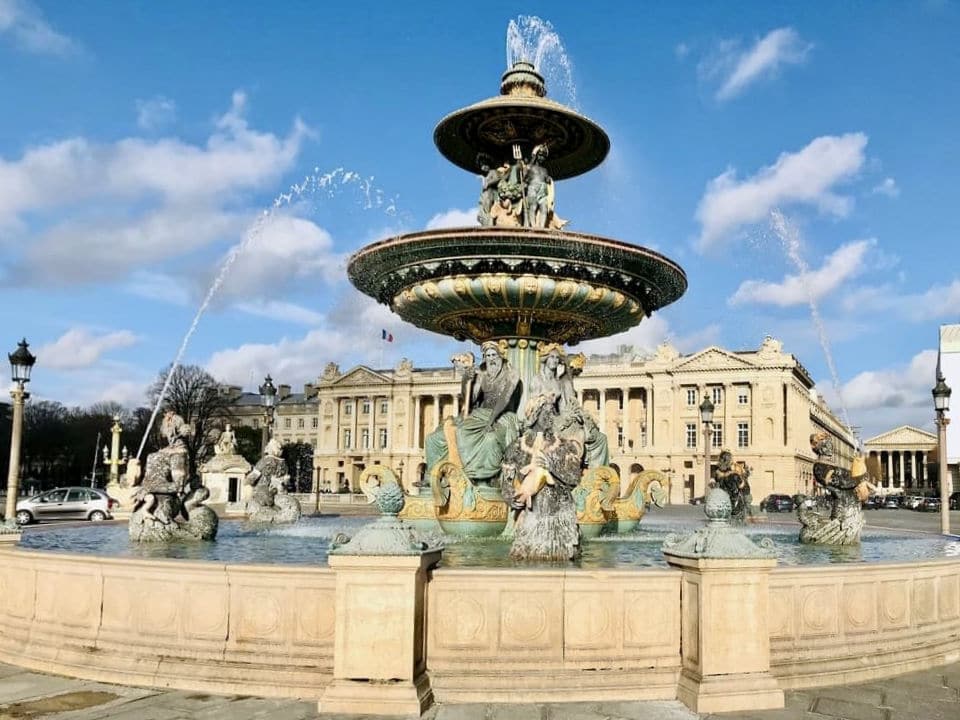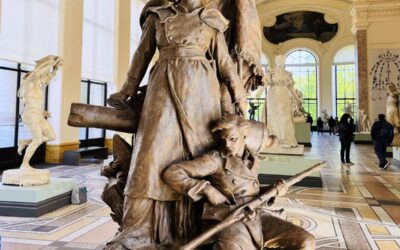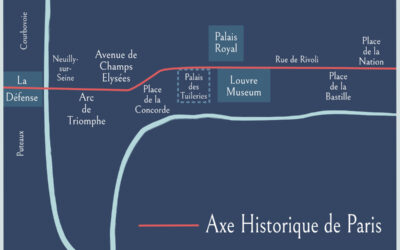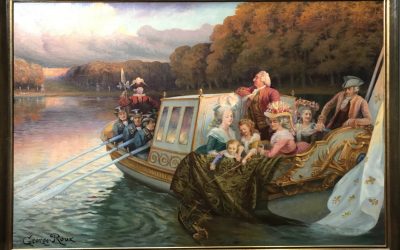France has a long and storied history, with a profound impact on the world of science, arts, and culture. It’s home to some of the most prominent figures from Napoleon Bonaparte to Louis Pasteur, and Jacques Cartier to Coco Chanel.
Whether you want to read more about its history or learn more about its prominent citizens, let’s take a look at some of the most influential and famous French people throughout history, shall we? Allons-y!
- 1. Napoleon Bonaparte (1769 – 1821)
- 2. Joan of Arc (1412 – 1431)
- 3. Marie Curie (1867 – 1934)
- 4. René Descartes (1596 – 1650)
- 5. Marie Antoinette (1755 – 1793)
- 6. Gustave Eiffel (1832 – 1923)
- 7. Jacques Cartier (1491 – 1557)
- 8. Edith Piaf (1915 – 1963)
- 9. Coco Chanel (1883 – 1971)
- 10. Charles de Gaulle (1890 – 1970)
- 11. Louis Pasteur (1822 – 1895)
- 12. William the Conqueror (1028 – 1087)
- 13. Brigitte Bardot (1934 – current)
- 14. Jacques Cousteau (1910 – 1997)
- 15. Victor Hugo (1802 – 1885)
- 16. Emmanuel Macron (1977 – Current)
- 17. Claude Monet (1840-1926)
- 18. Auguste Rodin (1840 – 1917)
- 19. Gérard Depardieu (1948 – current)
- 20. Zinadine Zidane (1972 – current)
- 21. Sun King Louis XIV (1638 – 1715)
- 22. Dom Pérignon (1638–1715)
- 22. Charlemagne (748 – 814)
- 24. Antoine de Saint-Exupéry (1900 – 1944)
- 25. Maximilien Robespierre (1758 – 1794)
- 26. Alfred Dreyfus (1859 – 1935)
- 27. Blaise Pascal (1623 – 1662)
- 28. Catherine Deneuve (1943 – current)
- 29. Luc Besson (1959 – current)
- 30. Serge Gainsbourg (1928 – 1991)
- 31. Bernard Arnault (1949 – current)
- 32. Nostradamus (1503 – 1566)
- 33. Jean Moulin (1899 – 1943)
1. Napoleon Bonaparte (1769 – 1821)
Born in Corsica to a minor Italian noble family, a man named Napoleon Bonaparte rose quickly through the ranks of the French Army. By 1799, he is elected First Consul of the Republique and by 1804, Napoleon was “voted” Emperor of France.
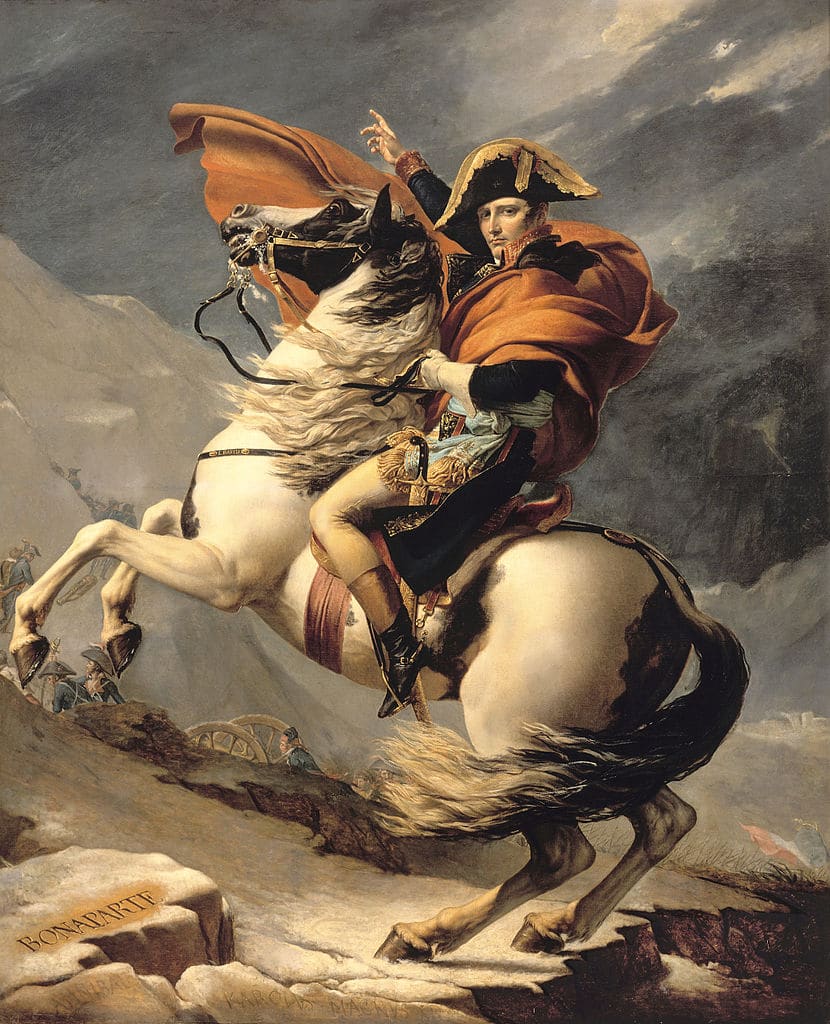
Napoleon was not content however, just being the Emperor of France. He went on to traverse the Alps conquer and pillage large parts of Italy, Austria, Egypt, and other parts of Europe and Africa.
Napoleon’s biggest impact on France was Code Napoleon, which is the Civil Code of France. This was a new legal code for France which replaced a complex pre-revolution system. The Napoleonic code detailed everything from the rights of individuals and families to property and criminal conduct.
At the same time as he was establishing a civil code in France, he also brought back slavery in France’s colonies.
After a disastrous military campaign in Russia, he retreated back to France with a much depleted army and found himself overrun by the British. Signing his surrender at the Palais de l’Elysées, he was exiled to the island of Elba. A few months later, he escaped and made a dramatic comeback to Paris.
It was not to be however. Finally defeated at the Battle of Waterloo, again by the British and her allies, he was exiled to the island of Saint Helena in 1821 which is where he died. You can read more about Napoleon Bonaparte here.
2. Joan of Arc (1412 – 1431)
In the midst of the 100 years’ war between England and France, a young maid named Jeanne d’Arc (Joan of Arc) would become the woman to capture the imagination of France.
Born to a relatively poor family, the young girl said that she received visions of the archangel Michael instructing her to support the French King Charles VII from the English.
Nicknamed la Pucelle d’Orléans (the maid from Orléans), she arrived in the French court at 17 years-old, dressed as a male soldier and made a strong impression on the King, whose armies were rapidly weakening.
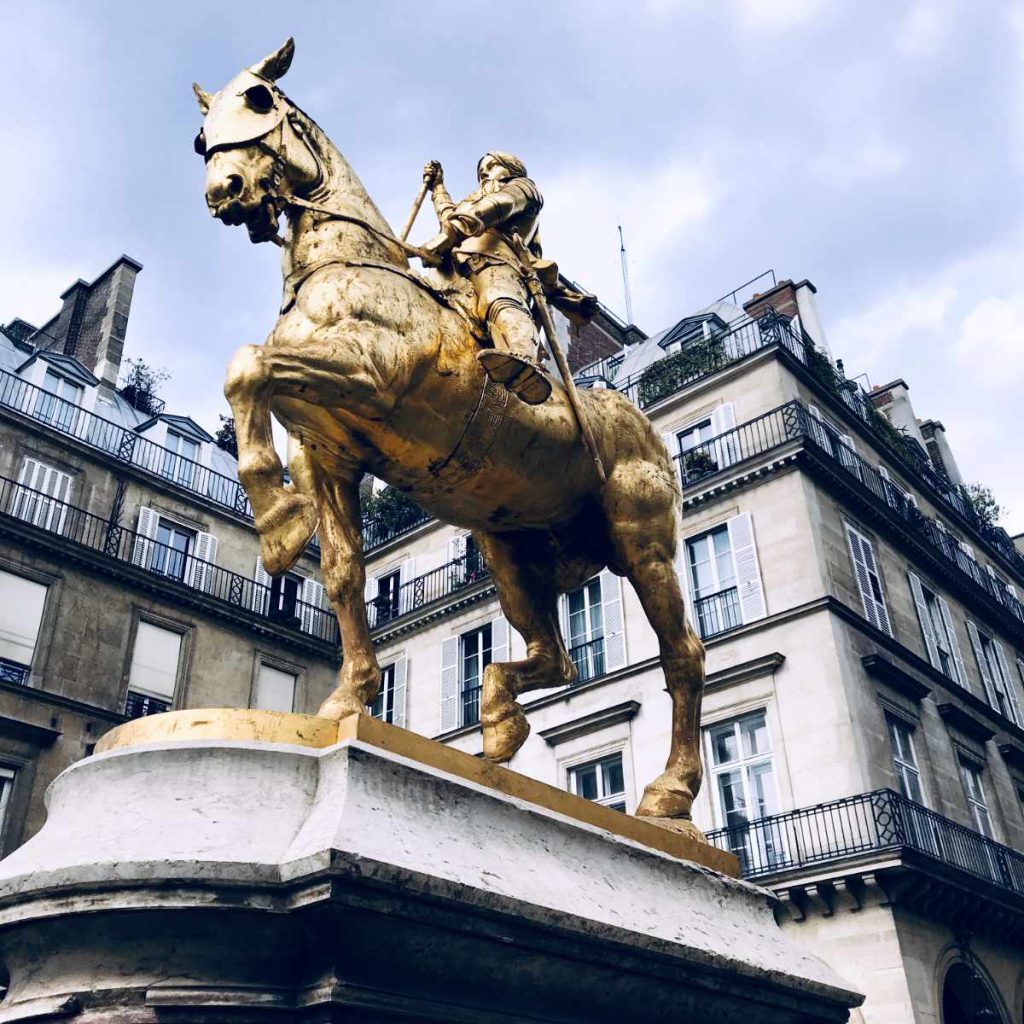
The French King sent Joan on a series of battles, along with the Scots with whom the French had formed the Auld Alliance. A deeply religious woman, Joan was able to lead the French army to victory, with her appearance effectively turned the war over territory into a religious war.
On 23 May 1430, she was captured in Compiègne in the North of France by a group of French nobles from Burgundy, who were allied with the English. She put on trial by the pro-English bishop Pierre Cauchon on a variety of charges, including cross-dressing and heresy.
After being declared guilty, she was burned at the stake on 30 May 1431 in Rouen, dying at about 19 years-old.
She was declared a martyr, and in the 18th century made a symbol of France by Napoleon Bonaparte. In the 20th century, she was canonized by the Roman Catholic Church and made one of the patron saint of France. (Her legacy however, has been usurped by the ultra-right movement today in France.)
3. Marie Curie (1867 – 1934)
Marie Sklodowska moved to Paris as a young woman, which is where she met her husband, a French physicist named Pierre Curie. Together, they would identify radioactive isotopes develop the theory of “radioactivity” and share the 1903 Nobel Prize in Physics.
Marie Curie would go on to also win the 1911 Nobel Prize in Chemistry, after the death of her husband, making her the first person to win in two different fields.
In 1920 she founded the Curie Institute in Paris, (as well as one in Warsaw, Poland) which remain major centres of medical research.
Today, Marie and Pierre Curie are buried in the Panthéon in Paris, in tombs lined with lead as their bodies are still radioactive.
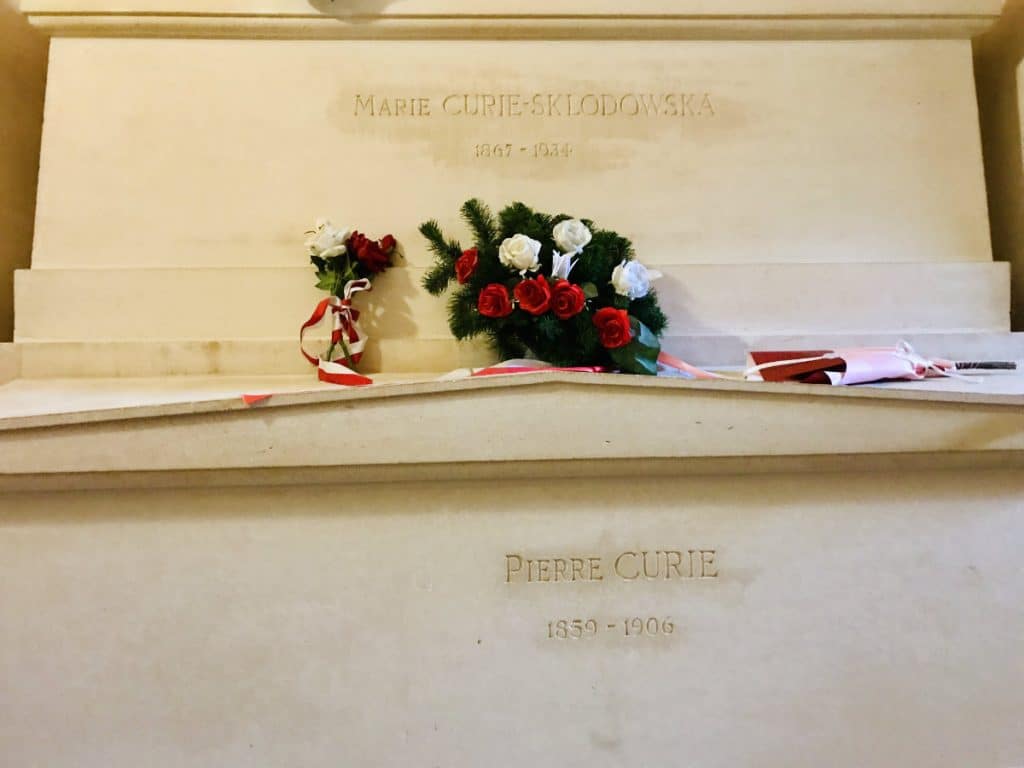
Their daughter, Irène Joliot-Curie, also won the Nobel prize for chemistry in 1935 together with her husband Frédéric Joliot-Curie.
4. René Descartes (1596 – 1650)
René Descartes was a famous French philosopher, mathematician, and scientist who invented analytical geometry, linking the previously separate fields of geometry and algebra.
I think, therefore I am
René Descartes
Descartes’s statement became a fundamental element of Western philosophy, about rationality, knowledge, and doubt. His book The Meditations on First Philosophy (1641) continues to be a standard text in philosophy classes around the world.
5. Marie Antoinette (1755 – 1793)
When Austrian Princess Marie-Antoinette married the future French King Louis XVI, France was slowly going bankrupt. She entered the Château of Versailles at its height of elegance as a mere teenager.
However, the 16-year-old Marie-Antoinette was desperately homesick. Adding to her misery, her husband took 7 years to consummate the marriage and give her a child.
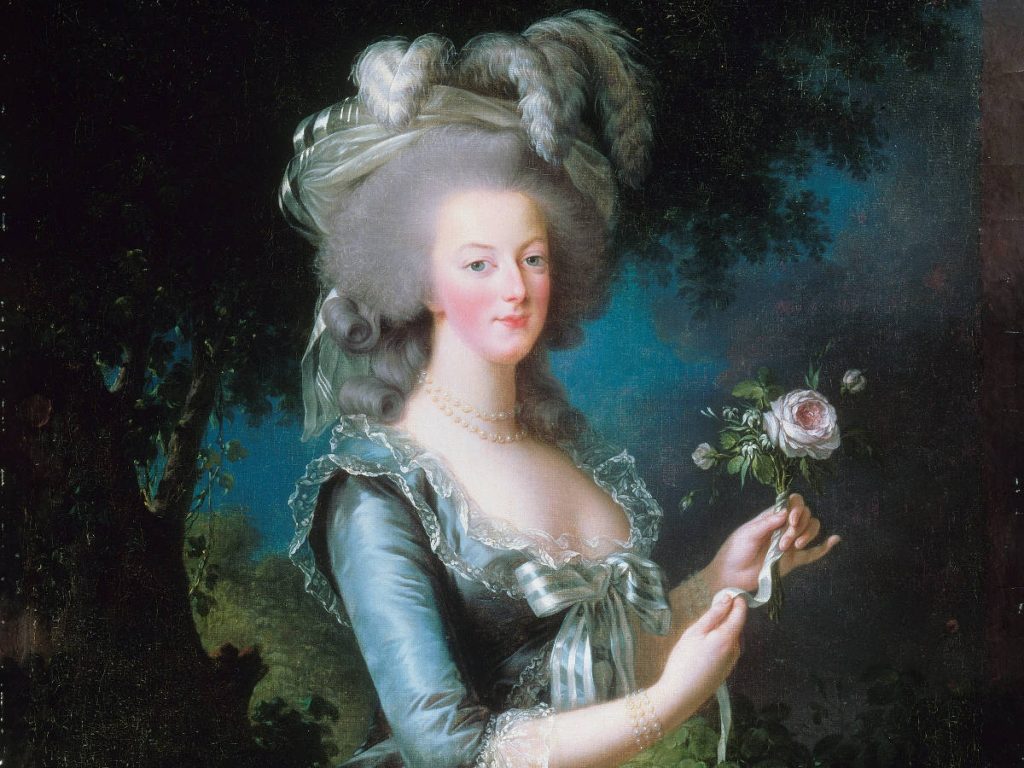
While she amused herself throwing parties and entertainment as best she could, King Louis XVI was spending a lot of money helping the American Revolutionaries fight their mutual arch-enemy, the English.
It would not end well, as the people blamed him and his “foreign spendthrift” wife for the ills of the country. To pay for it all, he tried to impose even more taxes on the poor to raise money.
The French King and Queen Marie-Antoinette were taken from Versailles when the monarchy was overthrown during the French revolution and eventually beheaded at Place de la Concorde in Paris in 1793.
Their 10-year-old son (Louis XVII) disappeared and no trace remains of what happened to him. Their elder daughter fared a bit better and survived the Revolution to the ripe old age of 70. But she was so traumatized, she never had children.
You can read more about Marie-Antoinette and her family here.
6. Gustave Eiffel (1832 – 1923)
It is not often a civil engineer becomes famous. The Eiffel Tower is named after its engineer, Gustave Eiffel who was from the French city of Dijon.
Eiffel was not just any guy. He had constructed several buildings, bridges and viaducts around France before the Eiffel Tower.
He was also just coming off of another large project building the metal framework with French sculptor Frédéric Auguste Bartholdi for the Statue of Liberty which opened in 1886.
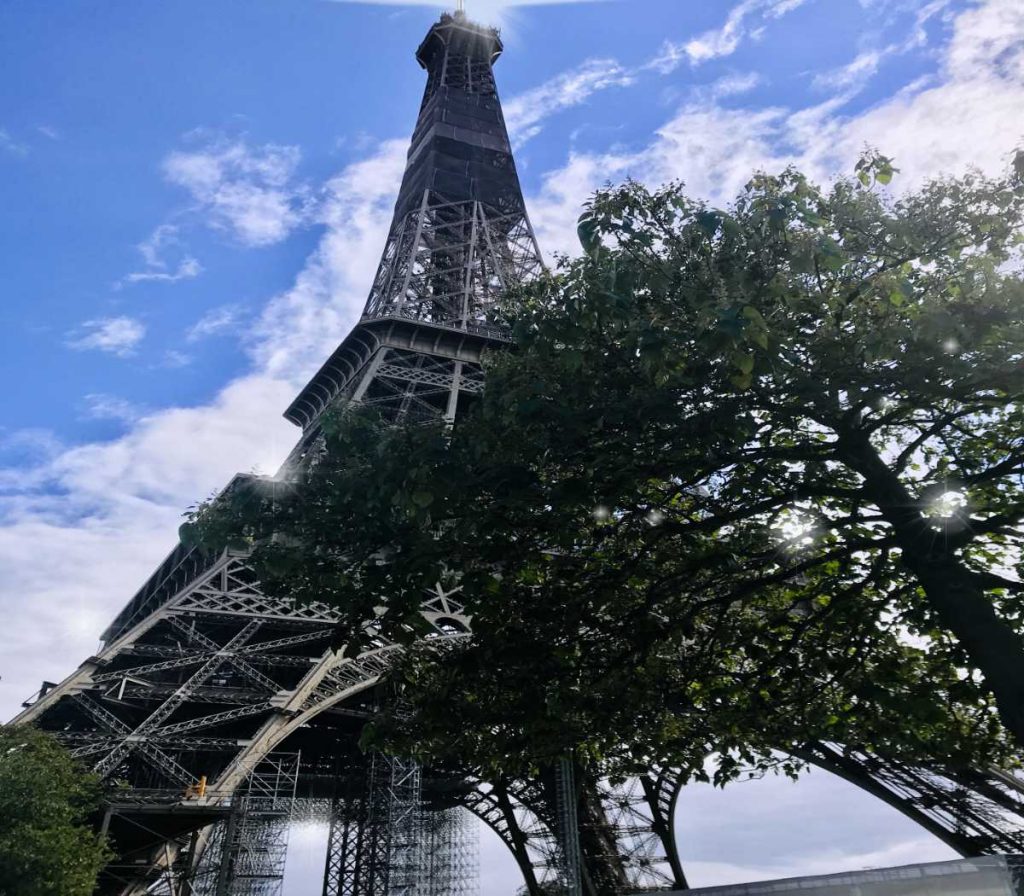
About 80% of the funding for the tower had come from Gustave Eiffel himself, and so the 20-year lease of the property was to allow him to recuperate his investment by selling tickets, exhibitions, etc.
He didn’t need that long however, just 6 months after it opened when he broke even on his investment.
A smaller version of the Statue of Liberty can be found a few 100 yards away from the Eiffel Tower in Paris on Pont de Grenelle.
7. Jacques Cartier (1491 – 1557)
In 1534, a Frenchman named Jacques Cartier set off from Saint-Malo on the west coast of France to discover a western passage to the wealthy markets of Asia.
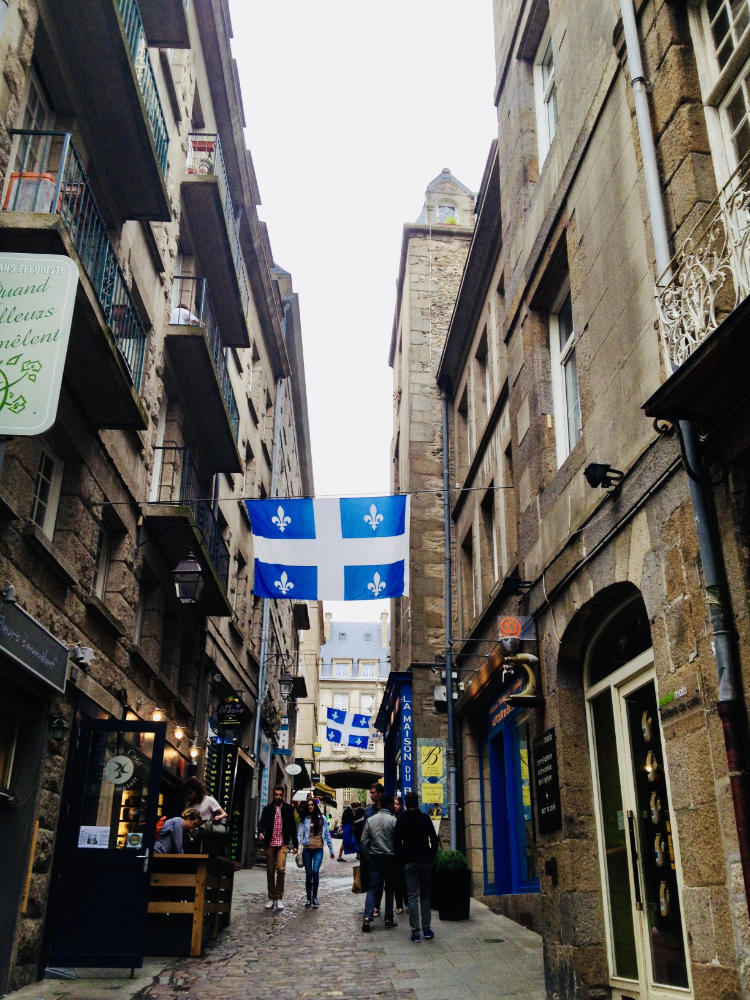
Having already located the entrance to the St. Lawrence River in Canada on his first voyage, he opened up the greatest waterway for the European penetration of North America.
It was the start of the French invasion and settlement of lands in the Americas, from Louisiana, Quebec, eastern Canada, Haiti, the Caribbean islands, and much more.
Bringing in slaves in from Africa, French soldiers settled on these lands, while attempting to hold off the British, Spanish, and Dutch. You can read more about famous French explorers here.
8. Edith Piaf (1915 – 1963)
One of the most famous musicians and singers in France has to be the indomitable Edith Piaf. Only 4ft8 in height, she was nicknamed “La Môme Piaf”, which is slang for “The Waif Sparrow” or “The Little Sparrow”.
On the list of the most famous french songs of all time, La vie en rose still defines France. Written in 1945, it was especially meaningful to the generation that survived the atrocities of World War II.
With other ballads like “Non, je ne regrette rien” and “”Hymne à l’amour”, her powerful lyrics and singing style made her enormously popular.
After years of alcohol abuse and medical problems, she died at 47 and is buried in Père Lachaise cemetery in Paris where her grave still attracts the crowds.
9. Coco Chanel (1883 – 1971)
After World War I, people wanted to let loose. The roaring 1920s would see corsets being banished and complicated dresses pushed to the back of the closet.
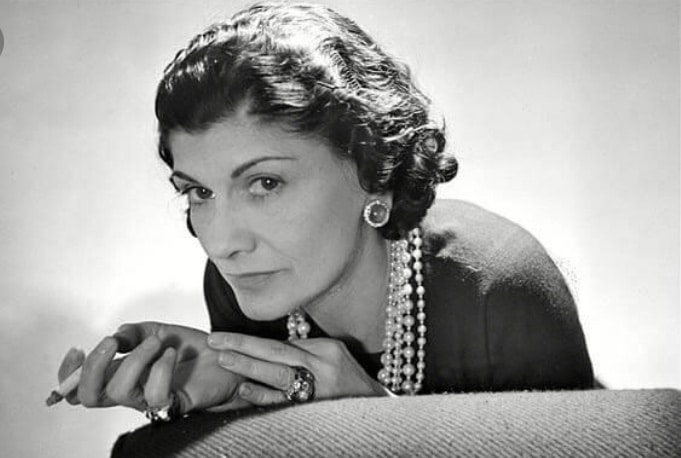
In 1926 Gabrielle “Coco” Chanel, a French couturier, published a picture of a short, simple black dress in American Vogue. It was calf-length and straight, and a revolution in terms of women’s clothing.
The simple design made it accessible for women of all social classes, while still being chic and attractive. The legend of the little black dress (and Coco Chanel) was born.
During the German occupation of France during World War II, Chanel was suspected of too close to the German occupiers while living at the Ritz Hotel in Paris. After the war, she was not charged as a collaborator due to an intervention by British President Winston Churchill.
She died at 87 while still living at the Ritz hotel. She had been in the process of preparing her spring catalogue.
10. Charles de Gaulle (1890 – 1970)
In 1939, the man leading the French Government at the time was a celebrated war hero. Maréchal Philippe Pétain was the Commander-in-Chief who had led the troops during World War I and earned the respect of the French people.
But by the time World War II rolled around, he was a tired old man. Appointed as Prime Minister of France in June 1940 he promptly conceded to Hitler. And so began Pétain’s Vichy Government collaboration with the German Reich.
It would fall to another French General, Charles de Gaulle, exiled in England to rally the French population to form a resistance to defeat the invaders.
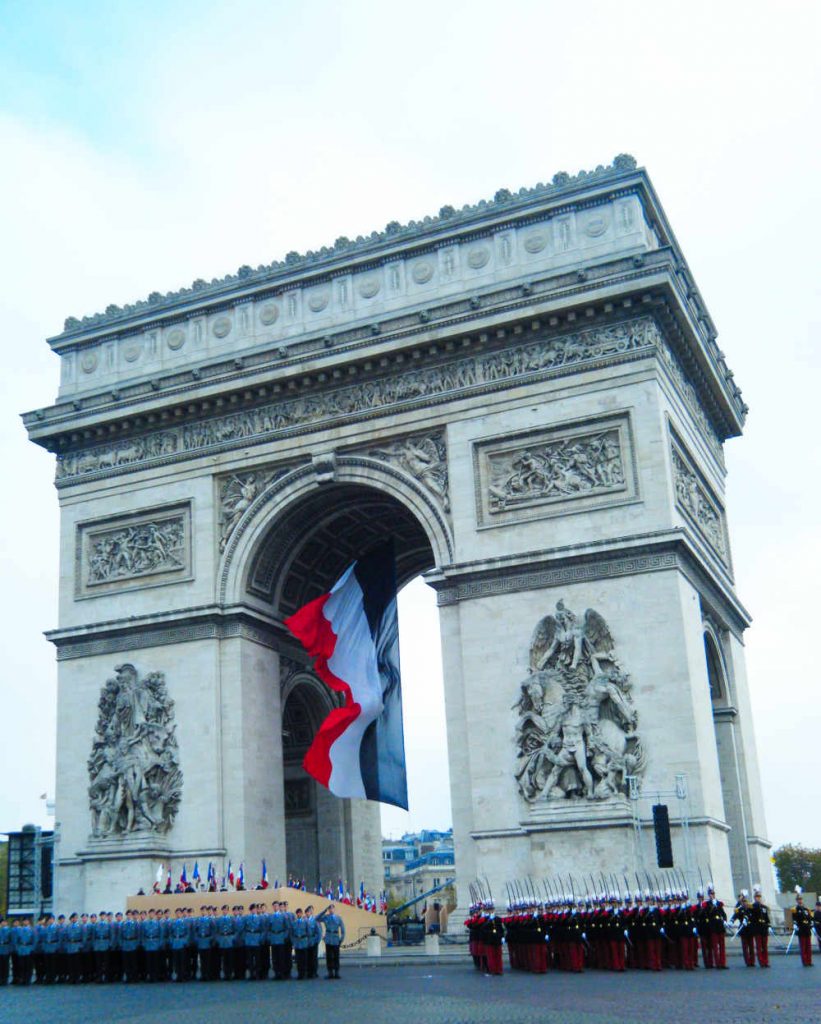
The de facto leader of the French Resistance, General de Gaulle was hailed as a hero after D-Day. Riding on Allied tanks, he was at the liberation of Paris in 1944 after a long and disastrous war suffered by the French.
He would go on to become President, on two different occasions. At last count, Charles de Gaulle has over 3900 streets and monuments named after him in France. You can read more about the history of Paris here.
11. Louis Pasteur (1822 – 1895)
Biologist Louis Pasteur has long been renowned in France for his discoveries of the principles of vaccination, microbial fermentation, and pasteurization.
From heating up milk to sterilization and washing hands, his many experiments showed that diseases could be prevented by killing germs, leading to him being referred to as one of the “fathers of germ theory”.
His research led to breakthroughs in the understanding of the causes and preventions of diseases, which laid down the foundations of modern hygiene, public health standards, and much of modern medicine.
Among his achievements, his vaccines are credited with saving millions of lives against rabies and anthrax which was rampant during his time. The Institut Pasteur in Paris continues his work, conducting experiments in the search for vaccines and other biological and medical studies.
For his work he was awarded the Legion of Honor Grand Cross in 1881. You can read more about French scientists and inventors here.
12. William the Conqueror (1028 – 1087)
For French people, William the Conqueror who conquered England in 1066, is French! Duc Guillaume of the Duchy of Normandy went across the English Channel from the west coast of France. He went to England leaving his wife and 9 children behind in Normandy, as he fought and solidified his hold on England.
William didn’t speak much English, so the language of the (English) court was French, a tradition that his descendants continued for centuries. As such, approximately 45% of words in English are rooted in French.
Many of William’s descendants continued to speak French rather than English, with the motto of the English monarch becoming:
Dieu et mon droit
French-English translation: God and my right
William’s descendants would go to intermarry for several generations with the French royal house, leading to many conflicts as they each tried to assert their rights to the other’s throne.
13. Brigitte Bardot (1934 – current)
For a certain generation, the iconic French actress of all time remains Brigitte Bardot. With her long mane of blond hair and dazzling smile, she was a pop culture icon who made many a moviegoer swoon.
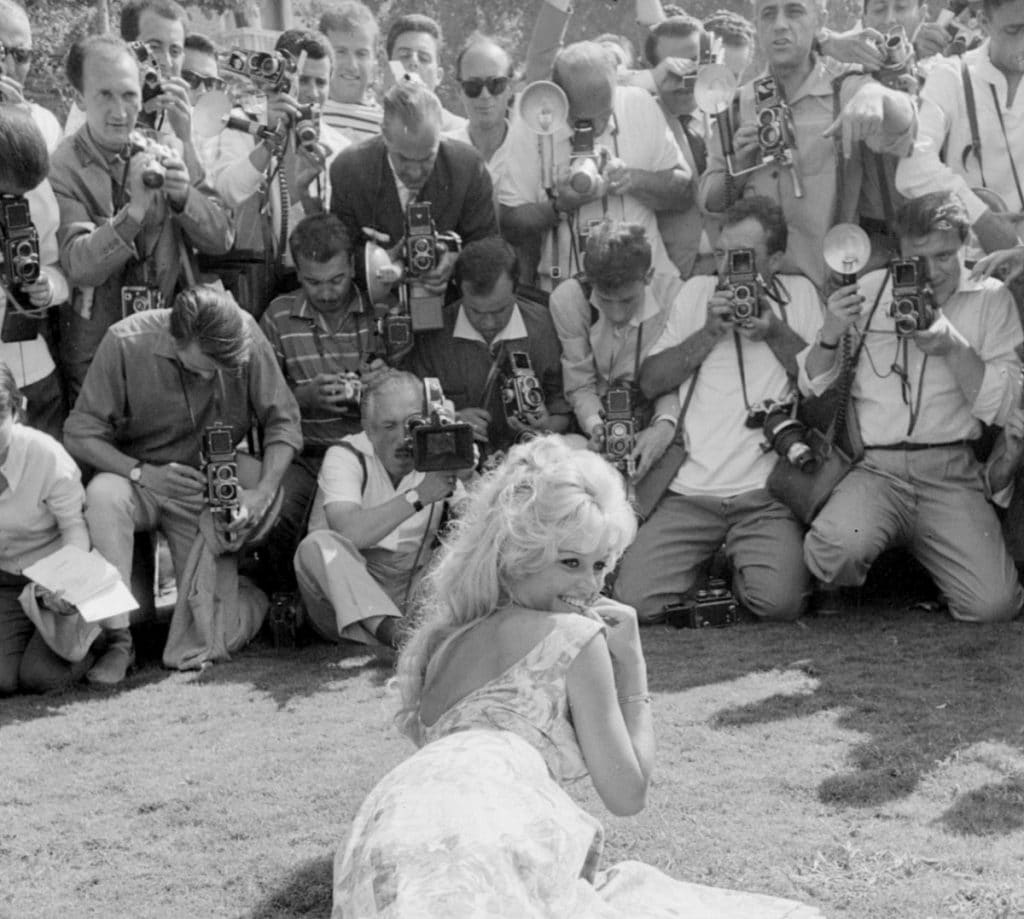
Her most famous works include:
- And God Created Woman (1956)
- Le Mépris (1963) with Jean-Luc Godard
- Viva Maria! (1965) with Louis Malle
Today she is retired from the film industry, turning her attention animals’ rights as an activist. She was awarded the Legion of Honour in 1985 but refused to accept it.
These days however, a darker image has emerged. She remains in the news as a far-right advocate (for Marine le Pen) criticising French immigration policies. She has been fined several times for inciting hatred. You can read more about famous French actors here.
14. Jacques Cousteau (1910 – 1997)
French scientist and underwater explorer Jacques Cousteau was renowned for his research on sea life and exploring the oceans.
Based in Sanary-sur-mer in Provence in a home that is still owned by his family, it was here that he invented the aqualung, in order to be able to spend longer amounts of time underwater.
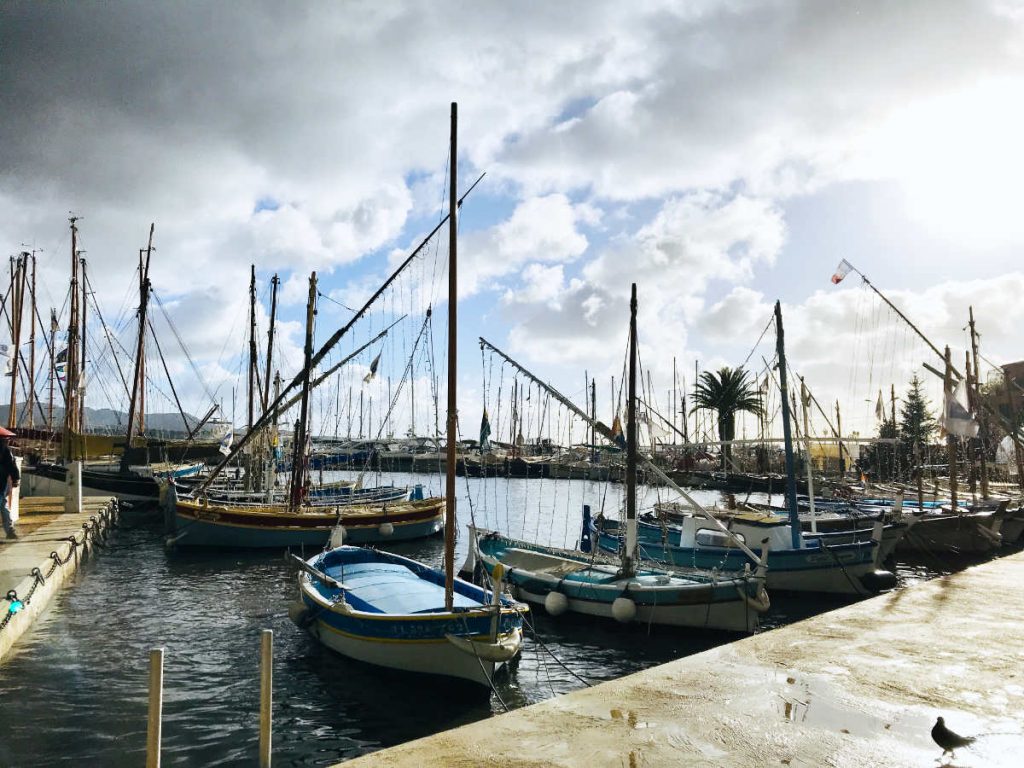
While in Sanary, Cousteau was good friends with his contemporaries Fréderic Dumas and Philippe Tailliez, who were also considered underwater pioneers and lived in the area.
The friends called themselves “Les Mousque-mers“, a play on words to “les 3 mousquetaires” or 3 Muskateers, the famed novel by author Alexandre Dumas. The world “mer” in French means “sea”.
15. Victor Hugo (1802 – 1885)
The writer of Hunchback of Notre Dame and Les Miserables, Victor Hugo did more than just write fictional novels.
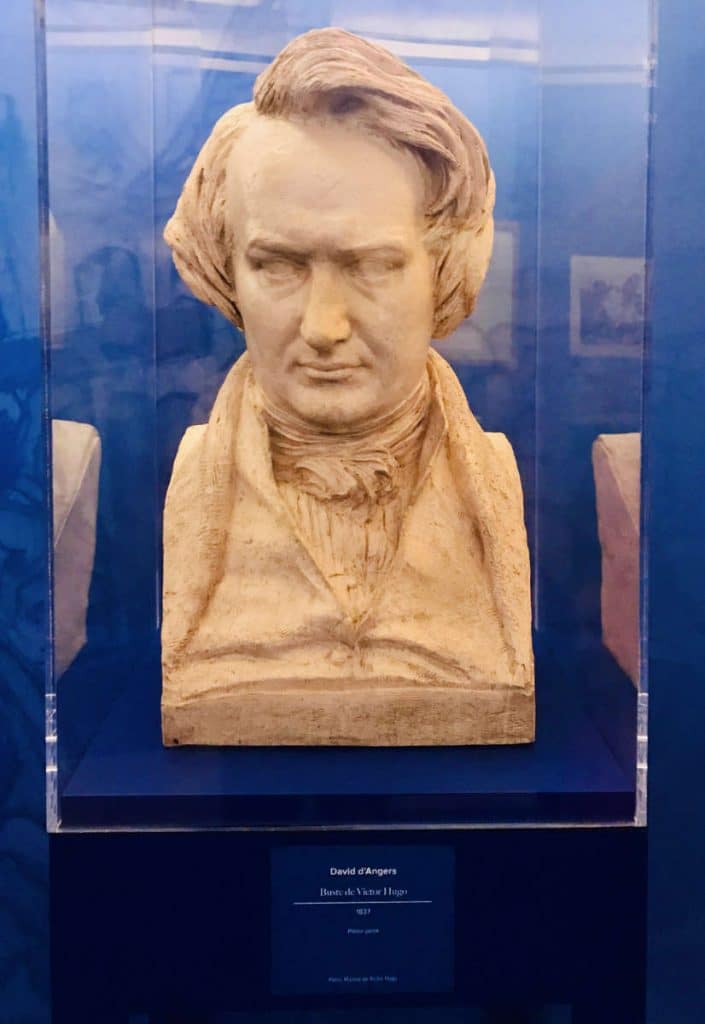
He was also a passionate supporter of republicanism after the Revolution, and served in politics as a deputy in the Assemblée Nationale, as well as a senator.
He gave several speeches to end poverty, as well as to establish universal suffrage (for women) and free education for all children. His advocacy in the 19th century to abolish the death penalty became renowned internationally.
16. Emmanuel Macron (1977 – Current)
The current President of France is a 40-something former investment banker who is good-looking enough to be an actor.
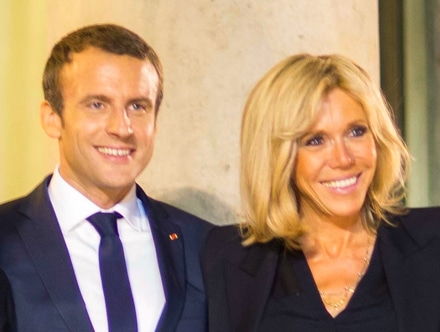
With a talent and the luck of being in the right place at the right time, he was elected in 2017 with 66% of the vote in the final round against Marine Le Pen.
He aims to be a centrist but has been called Jupiter for his rather autocratic manner. (French people always dislike the politican in power, so any approval or disapproval ratings should be taken with a huge grain of salt.)
But the reason most people overseas know him is because he married his high school English teacher, Brigitte Trogneux who is 24 years older than him.
17. Claude Monet (1840-1926)
One of the most famous French artists has to be Claude Monet, as one of the founders of impressionist paintings.
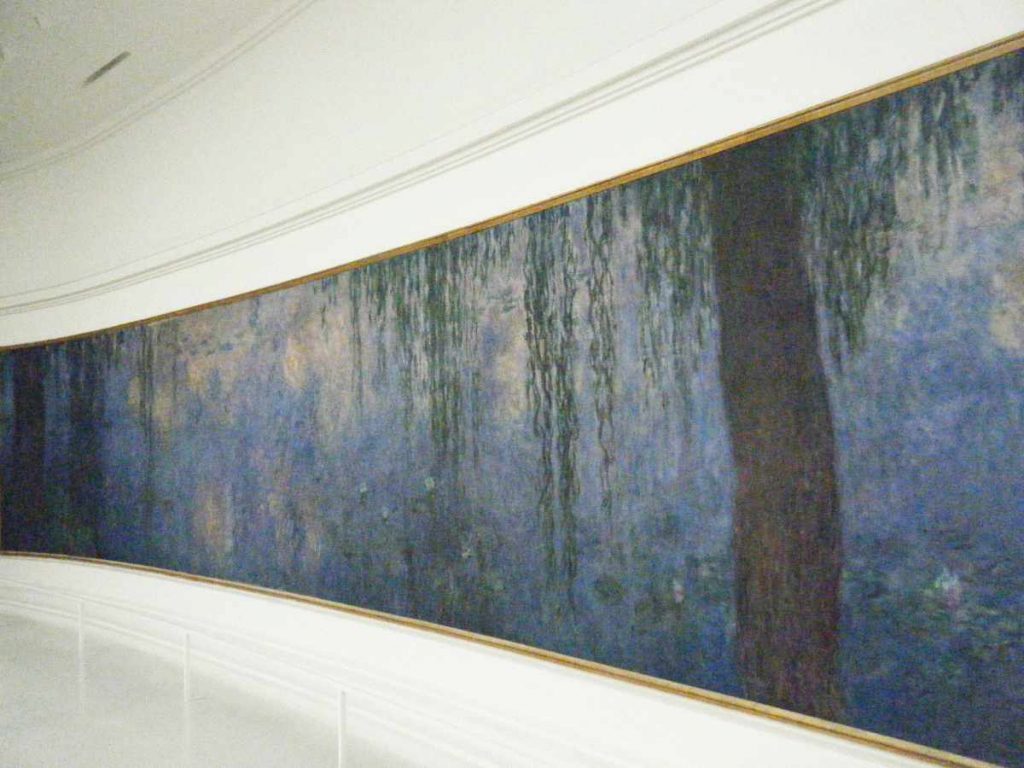
Born in Paris, Monet started off painting everything from landscapes and seascapes to portraits.
He became famous for his waterlilies, which were inspired by his gardens in the village of Giverny. He would paint the same outdoor scenes over and over again in different lighting and seasonal conditions.
You can find several of his artworks at Musée d’Orsay and Musée de l’Orangerie in Paris.
18. Auguste Rodin (1840 – 1917)
Another distinguished French sculptor with his own museum in Paris is Auguste Rodin, or rather two.
The museum has two sites, the palatial mansion “Hôtel Biron” in central Paris, as well as Rodin’s own home in the Parisian suburb of Meudon.
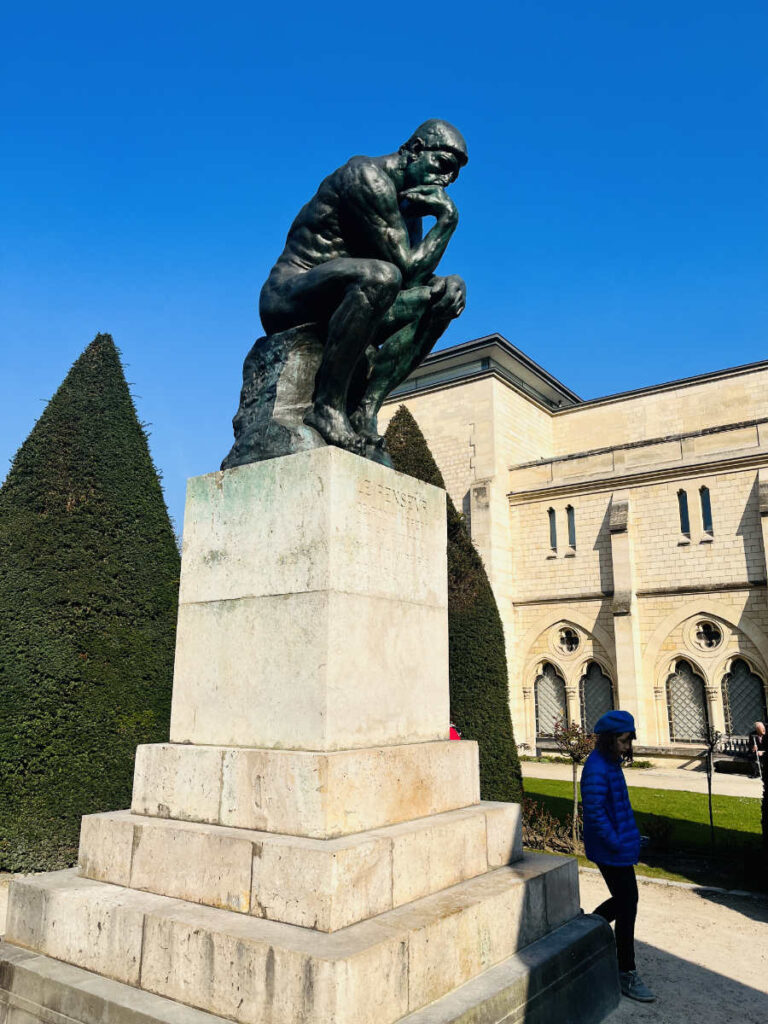
Considered among the “fathers of modern sculpture”, it is his statue of the Thinker that is immediately recognizable.
19. Gérard Depardieu (1948 – current)
Born in the small town of Châteauroux in the centre of France, Gérard Depardieu did not have a privileged start in life. He left school at 13, falling in with a rough crowd.

He would move to Paris at 16, where he fell into acting. He would then go on to find much success, many awards and international acclaim.
His most famous films include:
- 1900 (1976), with Robert De Niro
- The Last Metro (1980), for which he won the César Award for Best Actor,
- Cyrano de Bergerac (1990), for which he earned a nomination for the Academy Award for Best Actor
- Green Card (1991), with Andie MacDowell winning a Golden Globe Award,
- 1492: Conquest of Paradise (1992) with Ridley Scott
- Hamlet (1996) with Kenneth Branagh
- The Man in the Iron Mask (1998) with Leonardo Di Caprio
- Life of Pi (2012) with Ang Lee
He is a Chevalier of the Légion d’honneur and Chevalier of the Ordre national du Mérite.
20. Zinadine Zidane (1972 – current)
At nearly 50 years old, Zidane is no longer an active football (soccer) player, but still one that captures the French imagination.
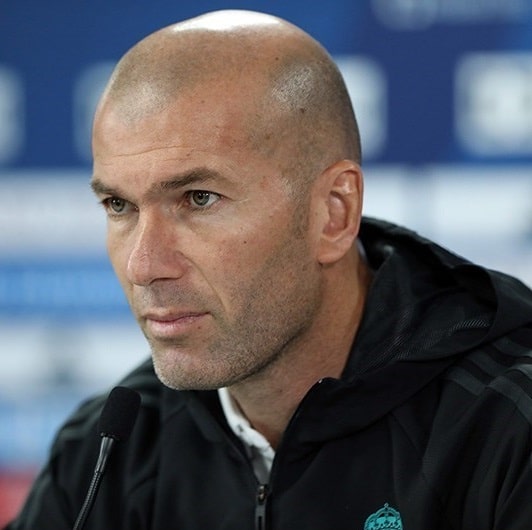
As a player, he has won the Ballon d’Or, 1998 World Cup, European Cup, and too many other trophies and personal accolades to count.
As the coach of Real Madrid, he won 3 Champions Leagues back to back, as well a La Liga and other titles. Known for his fiery temperament (and a rather famous head-butt), Zizou remains the coach that all young French footballers like Paul Pogba and Kylian Mbappé want to play for.
21. Sun King Louis XIV (1638 – 1715)
Sun King Louis XIV came to the French throne at the tender age of 4. It was a tumultuous time known as the Fronde, with nobles at the time contesting his mother Anne, who acted as Regent.
At one point, the 12-year old Louis and his mother were held prisoner at Palais Royal in Paris (the palace next to the Louvre) until they conceded to the demands of the frondeurs.
This made Louis detest and distrust Paris. When young Louis reached his majority, he immediately looked for a new power base instead of the Louvre, and settled on the family’s old hunting lodge: Versailles which was a couple of hours away from Paris by horse.
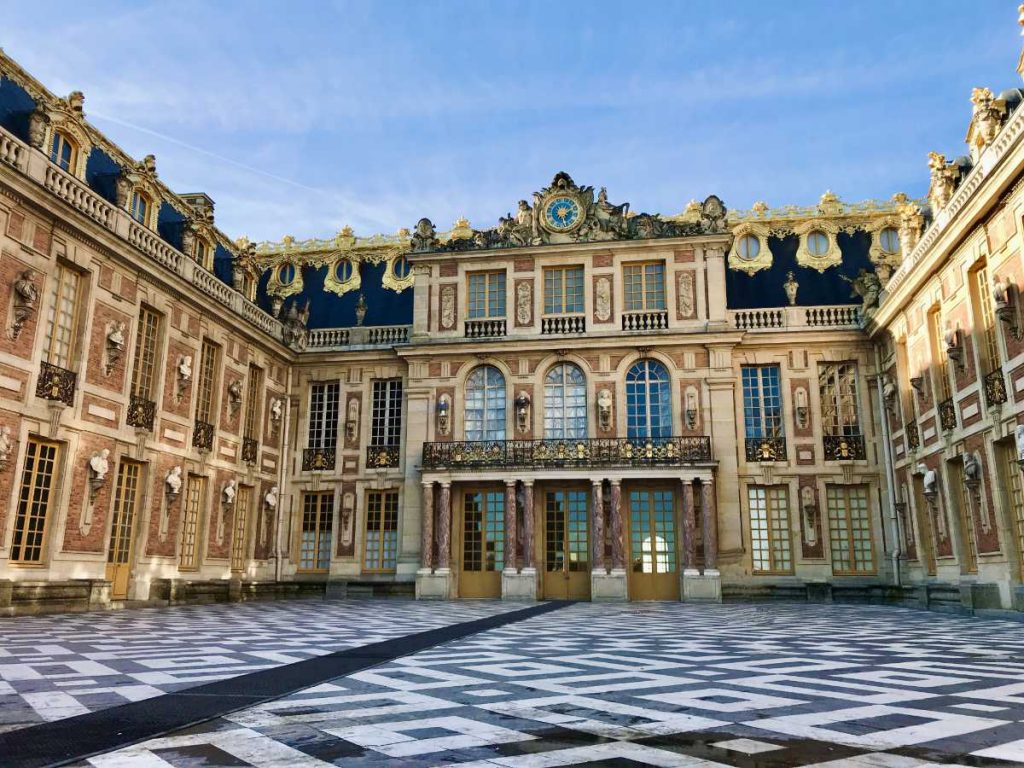
Louis XIV set about on a grand construction project (where many workers died) to build what we know today as the Palace of Versailles.
It was here that he came up with a strict dress code, detailed etiquette rules, and all sorts of other dictatures. This would make the French court the standard setter in terms of fashion and elegance among all the European monarchies.
The Sun King Louis XIV ruled for over 72 years and is the longest recorded of any monarch of a sovereign country in European history.
22. Dom Pérignon (1638–1715)
The name “Champagne” became famous in France and around the world due to 2 men. The first was a monk named Dom Perignon.
Sparkling wines have been produced in France as early as the days of the Roman Empire. The oldest recorded sparkling wine is Blanquette de Limoux, which was invented by Benedictine monks in the Abbey of Saint-Hilaire, near Carcassonne in 1531.
Dom Pérignon, who was a monk in an abbey in the outskirts of Reims, who came up with the idea of matching grapes together to come up with particular notes (rather than throwing random grapes together). He also used thicker bottles which helped prevent the bottles from exploding during transport.
This was key to getting the name “champagne” known around the world, as it could now be exported.

The 2nd man was his successor in the 18th-century, Dom Grossard, who proclaimed Dom Pérignon as the “inventor of Champagne” to augment the prestige and the history of their church and of their sparkling wine. And indeed, Dom Pérignon’s name lives on in history, with the champagne house named after him.
22. Charlemagne (748 – 814)
They say that every European is related to Frankish King Charlemagne. (He had at least 18 children, so it is possible).
It was the Franks who established the most powerful Christian kingdom of early medieval Europe. The name of the country of France (from the latin “Francia”) is derived from their name.
Becoming King at 26 years old, King Charlemagne has been called the “Father of Europe”. He conquered almost the entirety of the area known today as France and Germany.
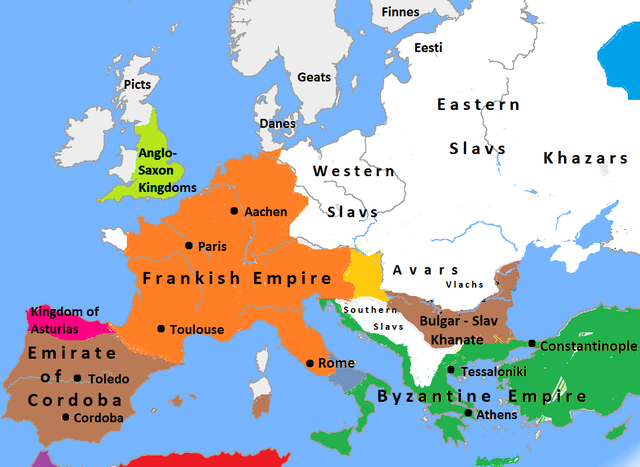
But upon his passing, his sons started squabbling, arguing over the region of Alsace and many other disputed lands in the middle.
This was not the first of the Franco-Germanic wars, and it would not be the last. You can read more about Charlemagne and his descendants warring over here.
24. Antoine de Saint-Exupéry (1900 – 1944)
The author of Le Petit Prince, Antoine de Saint-Exupéry is one of the notable writers honored at the Panthéon in Paris.
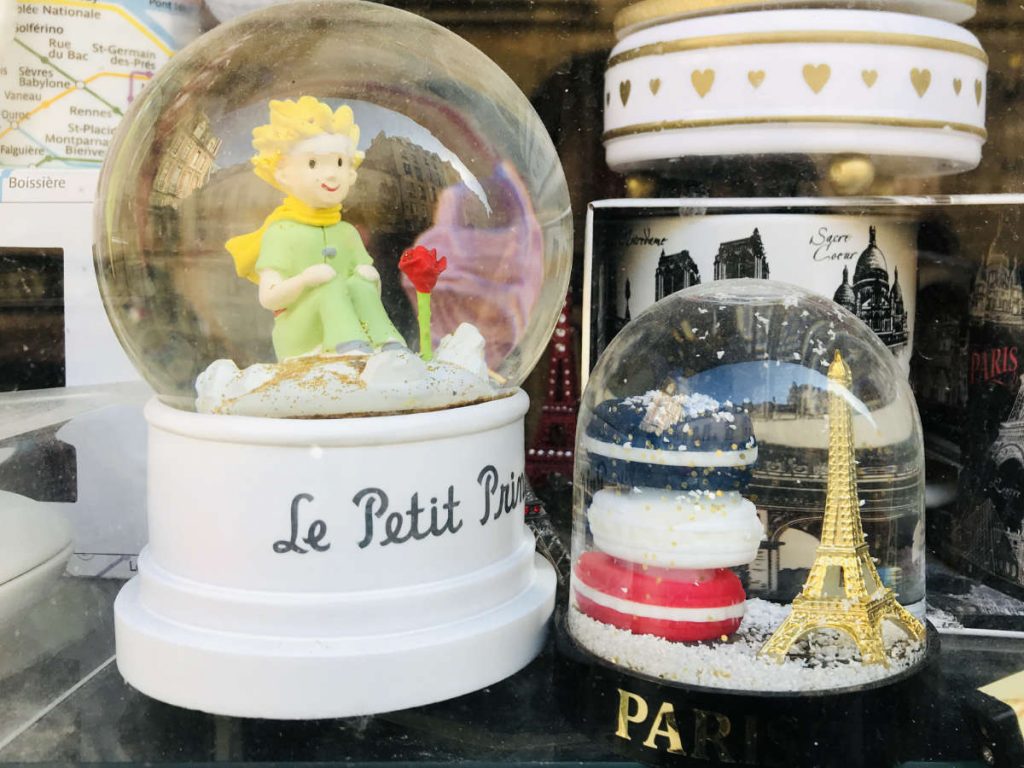
Saint-Exupéry was a famed aviator before becoming a writer. He joined the Free France air force during World War II, and disappeared while on a reconnaissance mission from Corsica over the Mediterranean on 31 July 1944.
His body was never found. Many of his works like the Little Prince were published in France posthumously by his family.
25. Maximilien Robespierre (1758 – 1794)
Robespierre was a lawyer who became one of most influential figures of the French Revolution. As part of the National Convention (which was more or less the Head of state at the time), he campaigned for universal manhood suffrage and the abolition of slavery.
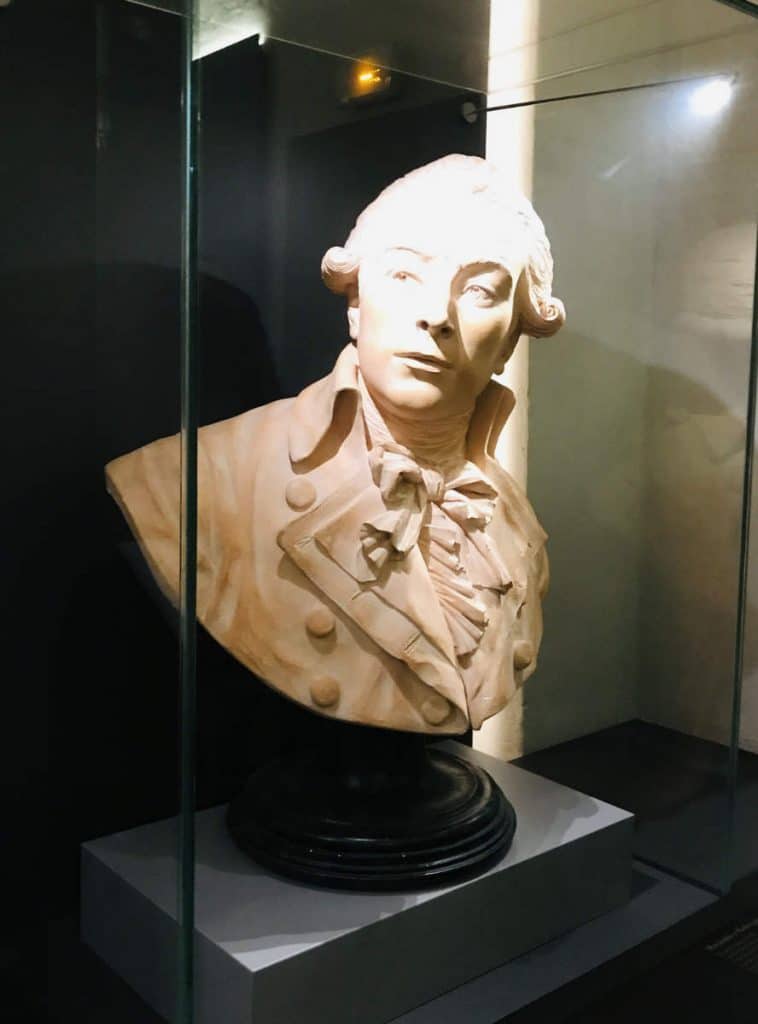
However, he was so tyrannical in his zeal to achieve his goals, i.e. by sending people to their deaths, that he himself was arrested and imprisoned in the Conciergerie. He would meet the guillotine just 8 months after Marie-Antoinette in July 1794.
26. Alfred Dreyfus (1859 – 1935)
Captain Alfred Dreyfus was not one to seek out fame. And yet, he remains one of the most famous names in French history.
Born in Mulhouse in Alsace, Dreyfus was a Jewish officer in the French army. In 1894, the French Army’s counter-intelligence section became aware that information regarding new artillery parts was being passed to the Germans by a highly placed spy.
This was just a few years after the Franco-Prussian war in 1870. Suspicion quickly fell upon Dreyfus, who was arrested for treason on 15 October 1894.
Anti-semitism was rampant, and Dreyfus was put on trial, court-martialled, and convicted without much evidence. It was a case that threatened to tear apart the nation. Famed French novelist Émile Zola wrote his most famous work, a newspaper article called “J’accuse“, meaning “I accuse”.
Zola wrote a passionate defence of Dreyfus in what became known as the Dreyfus affair. Eventually the truth came out, that Dreyfus’s signature had been forged, and that he was framed.
However, the reverberations of the case still remained. While attending a ceremony removing Emile Zola’s ashes to the Panthéon in 1908, Dreyfus was shot in the arm by a right-wing journalist, who was trying to assassinate him. Dreyfus was later awarded the French Legion d’honneur.
He died in Paris aged 75, on 12 July 1935, 29 years after his exoneration. Two days later, his funeral cortège passed the Place de la Concorde through the ranks of troops assembled for the Bastille Day events, as a sign of honor.
27. Blaise Pascal (1623 – 1662)
In 1640, a teenager named Blaise Pascal was co-opted into his father’s office as tax collector in the city of Rouen. Pascal was a child prodigy, and having been forced to manually work on tediously detailed calculations, he came up the mechanical calculator.
He designed the machine to add and subtract two numbers directly and to perform multiplication and division through repeated addition or subtraction.
Pascal’s calculator was especially successful in the design of its carry mechanism, which adds 1 to 9 on one dial, and carries 1 to the next dial when the first dial changes from 9 to 0. Each digit was independent, allowing multiple carries to quickly add up. The machine was initially called the Pascaline.
As Pascal grew into adulthood, he would go on to work on various mathematical concepts like probability theory and geometry, as well as gain fame as a philosopher and physicist.
28. Catherine Deneuve (1943 – current)
At one time, Catherine Deneuve was the face of Marianne, one of the official symbols in France. Making her film debut at 13, she would go on to win many nominations and awards for her acting abilities.

Her most famous films include:
- Repulsion (1965) with Roman Polanski
- Belle de Jour (1967) with Luis Buñuel
- The April Fools (1969) with Jack Lemmon
- Hustle (1975) with Burt Reynolds
- A Slightly Pregnant Man (1973) with Marcello Mastroianni
- Indochine (1993) for which she received an Oscar nomination for Best actress.
Deneuve continues to be a force in the movie industry these days, with recent films like Potiche (2011), On My Way (2014), In the Courtyard (2015), and La Tête haute (2016), all of which she received César nominations for.
29. Luc Besson (1959 – current)
French Director Luc Besson these days is at the forefront of Hollywood as well as French cinema. As writer, director, or producer, Besson has so far been involved in the creation of more than 50 films. Currently on this 4th wife, the director has 5 children and a closet full of awards.
His most famous movies include:
- Taken series with Liam Neeson
- Lucy with Scarlet Johansson
- The Lady with Michelle Yeoh in a biography of Myanmar’s Aung San Suu Kyi
- The Family with Robert De Niro, Michelle Pfeiffer, and Tommy Lee Jones
30. Serge Gainsbourg (1928 – 1991)
Legendary French musician Serge Gainsbourg may not be well known outside France, but he is the French version of Mick Jagger, David Bowie, and Sting combined. With provocative lyrics, Gainsbourg’s songs still push the envelope today, years after his death.
A short affair with bombshell Brigitte Bardot didn’t hurt his reputation either. Subsequently, his personal and musical partnership with British actress Jane Birkin (of Birkin bag fame) made them the IT couple of their time.
31. Bernard Arnault (1949 – current)
Born in Roubaix, French investor Bernard Arnault is best known in France for being one of richest men in the world.
Owner of LVMH, he controls such luxury brands as Christian Dior, Givenchy, Marc Jacobs, Stella McCartney, Loro Piana, Kenzo, Celine, and Bulgari.
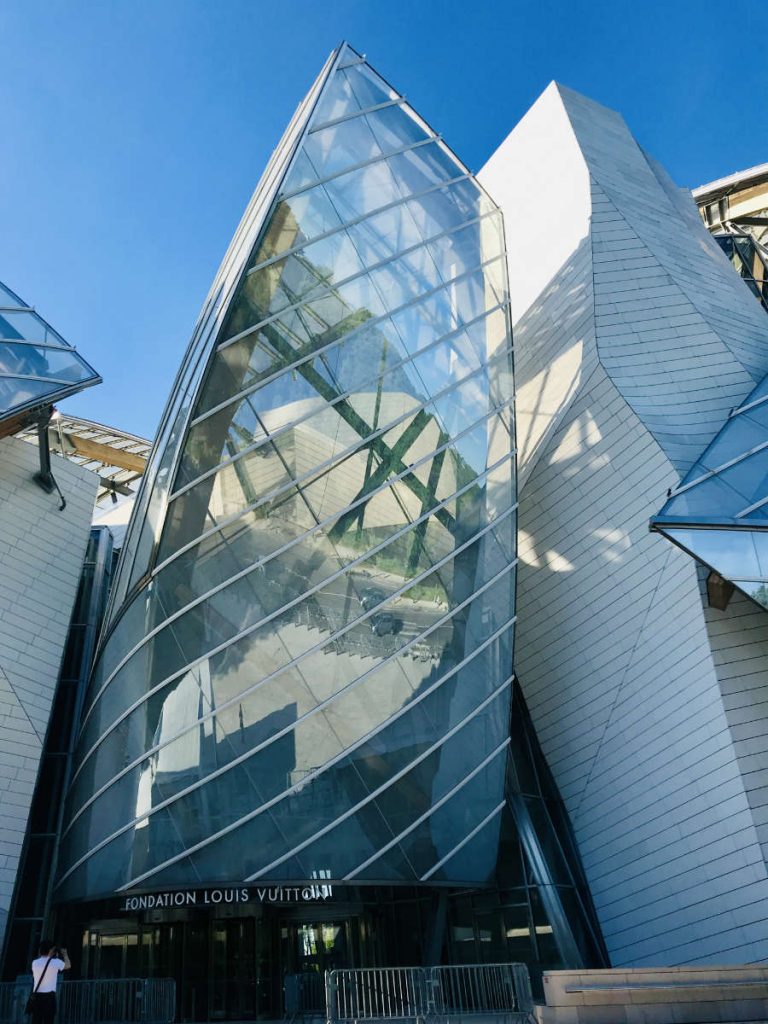
Producing everything from high-end clothing, cosmetics, and perfumes, LVMH has a wide reach. He also sponsored the Louis Vuitton Fondation, a not-for-profit art museum that is located in Bois de Boulogne in eParis.
32. Nostradamus (1503 – 1566)
Born in St. Remy de Provence, legendary foreseer Nostradamus, was actually a medical doctor.
He was born into a Jewish family that converted due to religious tensions, and had studied to become a doctor in nearby Avignon and Montpellier. It was a good career choice that was quite critical as the plague was rampant in his time.
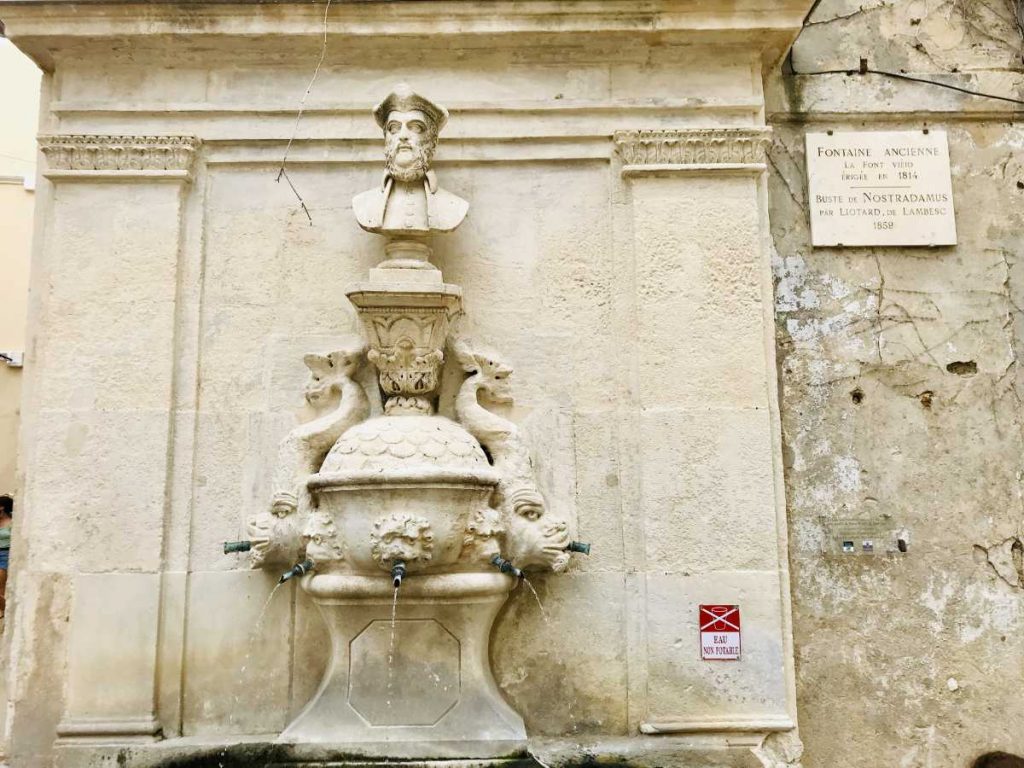
Given the fears of the era and his study of medicine, mathematics, astronomy, and the occult, he wrote his famous book “Les Prophéties (The Prophecies). His books and writings would bring him to the attention of French Queen Catherine de’ Medici, who became one of Nostradamus’s greatest admirers.
With his writing hinting at unnamed threats to the royal family, she summoned him to Paris to explain them and to draw up horoscopes for her children. By the time of his death in 1566 in nearby Salon-de-Provence, Queen Catherine had made him Counselor and Physician-in-Ordinary to her son, the young King Charles IX of France.
But Nostradamus’s fame really grew after his death. His rather vague predictions came to befall Catholic Queen Catherine. She would lose all her sons in short order, and France would fall into a civil and religious war, as Catholics in Paris and Protestant Huguenots in the south of France fight each other.
Over 3 million French people are believed to have died, making it one of the deadliest religious wars in Europe. And with that, Nostradamus’s reputation as a foreseer was sealed.
33. Jean Moulin (1899 – 1943)
Jean Moulin was one of the most famous French resistance fighters during WWII. He was the police prefet of Chartres right before the war, having been removed from his functions after the German invasion by the Vichy regime.
He would go on to lead the resistance for several years and is remembered today as one of its main heroes working in France to unify the country under Charles de Gaulle.
He was finally caught and arrested by the German Reich and tortured to death during WWII at the age of 44. All over France you will see several memorials dedicated to him with over 2215 streets and monuments dedicated to him.
There is also a museum in Paris called the Musée Libération Leclerc Moulin meant to commemorate the events of World War II and the impact that it had on the French people at the time.

If you enjoyed that article, you may like to read more about French culture here. A bientôt!
